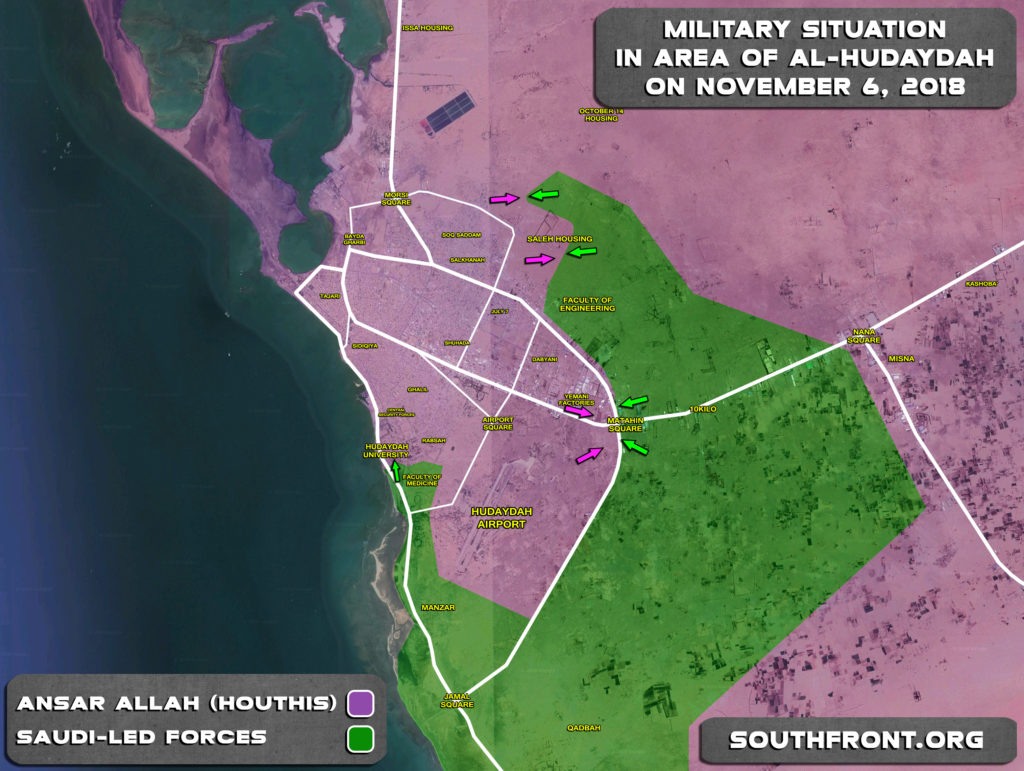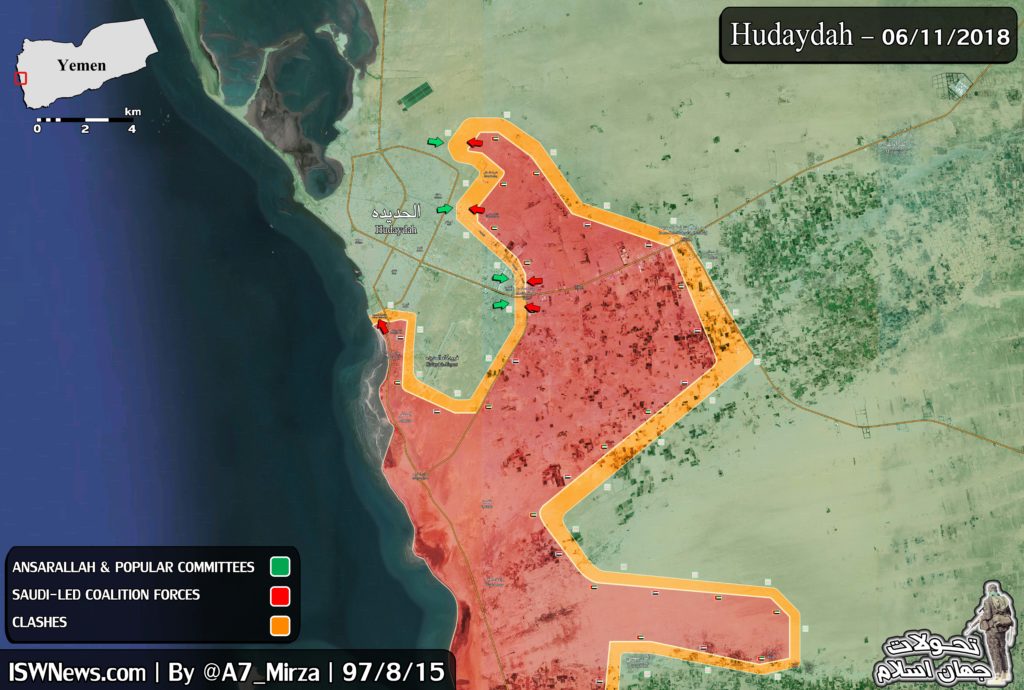On November 6, clashes near the port Yemeni city of al-Hudaydah continued with forces of the Saudi-UAE-led coalition were attempting to capture more areas around it in the fraework of its wider effoort to encircle the Houthi-held city.
Intense clashes took place near the Matahin square where members of Ansar Allah (also known as the Houthis) and their allies recaptured a number of positions from coalition forces. However, they were not able to develop gained momentum immediately and to force coalition troops to retreat from nearby positions.
At the same time, coalition forces made an attempt to capture the Saleh housing, but failed to do this.
According to reports from the ground, in the period from November 4 to November 6, warplanes of the coalition carried out up to 200 strikes on positions on Ansar Allah-led forces in the area.
So far, this very attempt of the coalition to capture al-Hudaydah city has appeared to be more sucessful than the previous ones. The Houthis have faced a number of issues, which are mostly caused by problems with anti-armour means and measures as well as the advantage of the coalition in manpower and military equipment.
At the same time, the problem of the advancing coalition forces is a narrow frontline east of al-Hudaydah. Their positions there are vulnerable for counter-attacks from the northern and eastern directions. Yemeni sources expect that the Houthis will likely use this vulnerability soon.
Videos:







